ASO for taxi apps: unexpected keywords as a source of traffic
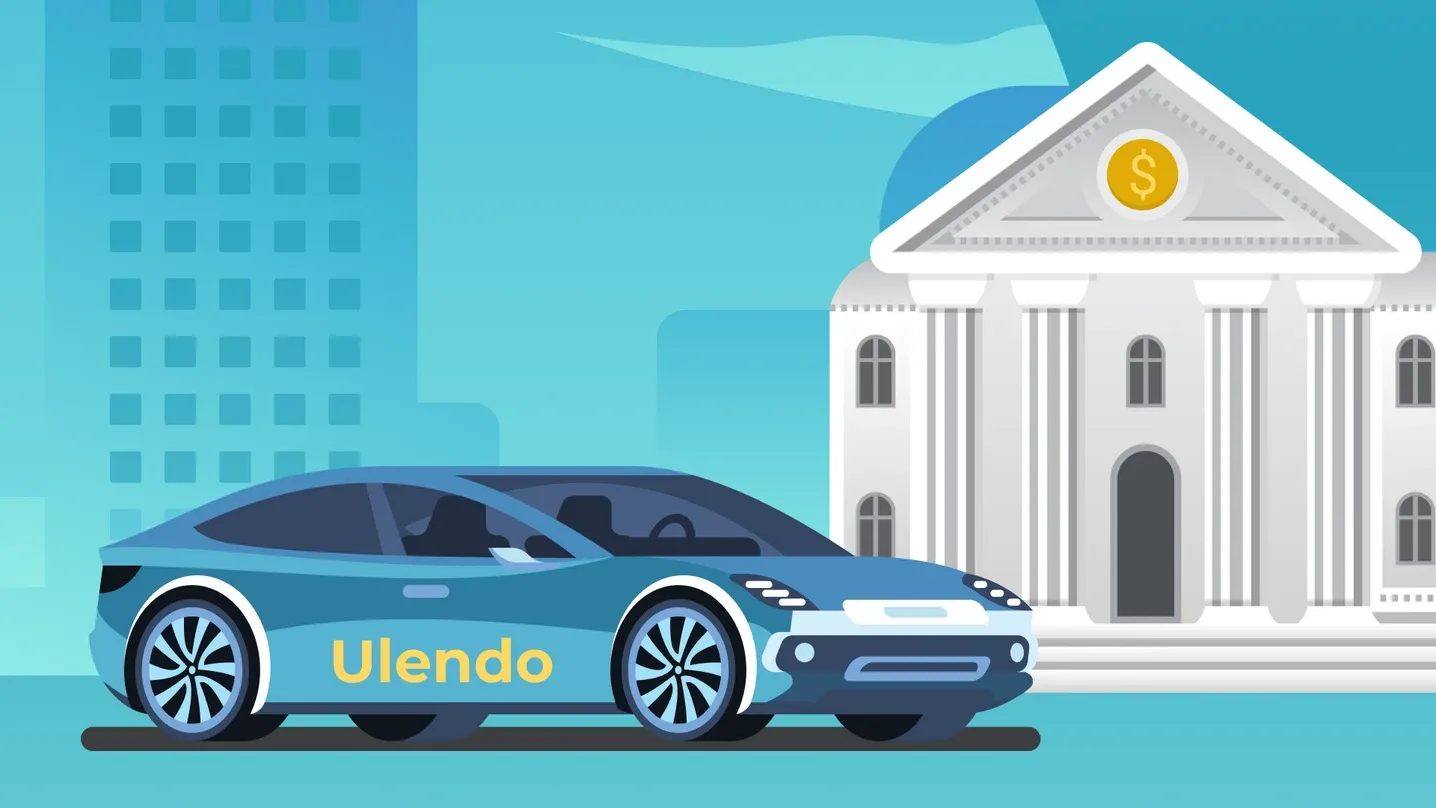
What is ASO?
ASO, short for App Store Optimization, consists of both textual and visual parts. And keywords play a decisive role in making your app among the first visible in the App Store or Google Play.
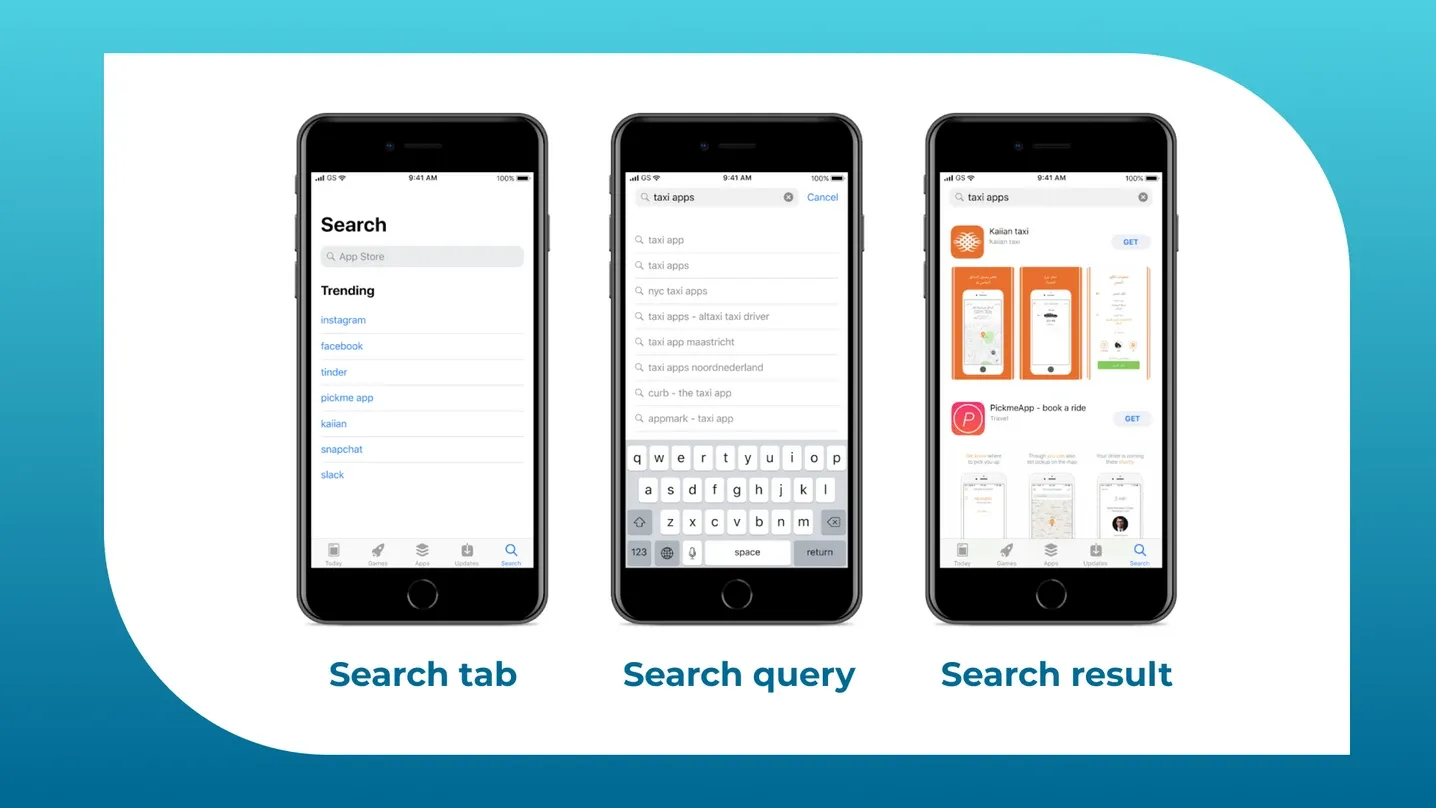
Big names like Uber, Instagram or YouTube enjoy being at the top as they simply get many installs. People quickly find them, just typing the first letters of the app name. What if someone is looking for, let’s say, a taxi app in a small local market? People will type “taxi”, “cab”, or “ride” to find a service they need. Kind of obvious, isn’t it?
Right keywords can make your business blossom. They help place your app in the top chart, so users can easily find when searching for it. An ideal win-win situation!

How to find the right keywords?
Competitors are not only your enemies. In ASO they actually become your friends. Keywords your competitors use are the first source of your research for App Store Optimization. Tools like AppAnnie, AppTweak, and AppFollow will come in handy to form a great ASO strategy. Imagine that can literally spy on competition and then include their best-performing keywords into your store metadata.
But what if there are no competitors?
Generally it is as clear as this: take the most relevant queries people use to find an app and add them as the keywords to your app page. But who should be your example if there are no similar businesses?
ASO requires creativity. Let’s imagine – you are building an Uber-like app for a country with no taxi apps yet. People don’t even search for taxi apps. What should you do?
Ulendo case: a bit of creativity to find a niche
Ulendo is the first Uber-like taxi app in Zambia. As there is no dedicated App Store for Zambia, people use Apple ID of another country, for example, USA. Therefore it’s difficult to understand what country a search request came from – Zambia or the USA.
Having US Apple ID means that a person sees all apps in the US App Store. Basically, people in Zambia see Uber or Lyft typing “taxi” or “cab”. Using these keywords will lead to competing with Uber, Lyft, etc. in the US App Store. It is obviously impossible to win this battle. There is even no need for this as Ulendo is a local app.
What makes the case even more challenging is that there has never been a taxi app in Zambia before. No learning from others’ experience for us. So, the aim is to invent unique keywords placing our taxi app to the top of the US App Store, but only for Zambian region.
Ok, who can look for ride-hailing apps there? Zambian people ready to install the first local taxi app. The perfect client looks like this:
- has a smartphone
- has mobile Internet connection
- has money
And guess what? Banking apps turn out to be a niche. Barclays, IZB, and FNB banks have dedicated apps for the locals. Using these brand names as relevant keywords will help people to discover a taxi app. Quite tricky!
Great, what do we do next?
We add banking keywords to the title, subtitle, description, and keywords field. To prevent problems with the Apple review team (they manually review each app update), we don’t use brand names straight ahead. Such phrases as “Inspired by atlasmara, IZB, FBN”, “Inspired by mobile banking apps atlasmara, IZB, FNB, Barclay” or “Ulendo: get taxi to your bank” are just right.
Hmm, and does this strategy work out?
YES! The results are even more impressive than in our wildest dreams. The numbers and charts will show it better. Let’s take a look at both Google Play and the App Store. They differ a lot.
App Store
Banking-keyword-strategy got us to the top 5. The ranking by keywords has not changed in the course of time. Even after removing those keywords from title and subtitle, but leaving them in a keyword field, the app remains top of the chart.
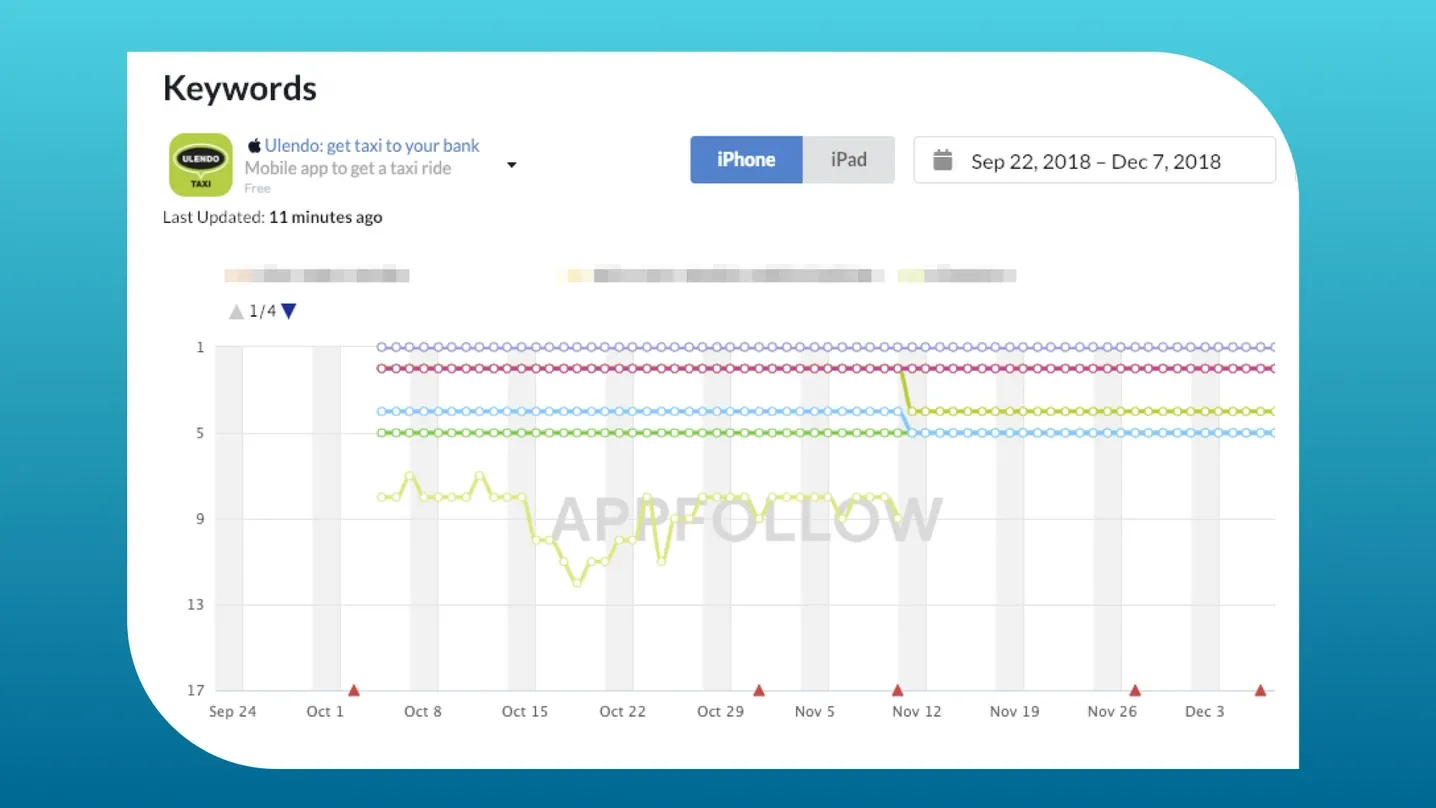
Interesting fact: while working on this strategy, our team got a letter from Barclays asking to remove their company name from our App Store metadata. Still deleting it from the description didn’t influence our store position. So we apologized to the Barclays representative and removed their mention immediately:)

Google Play
So, let’s start with this analytics chart. Don’t panic, let us explain it.
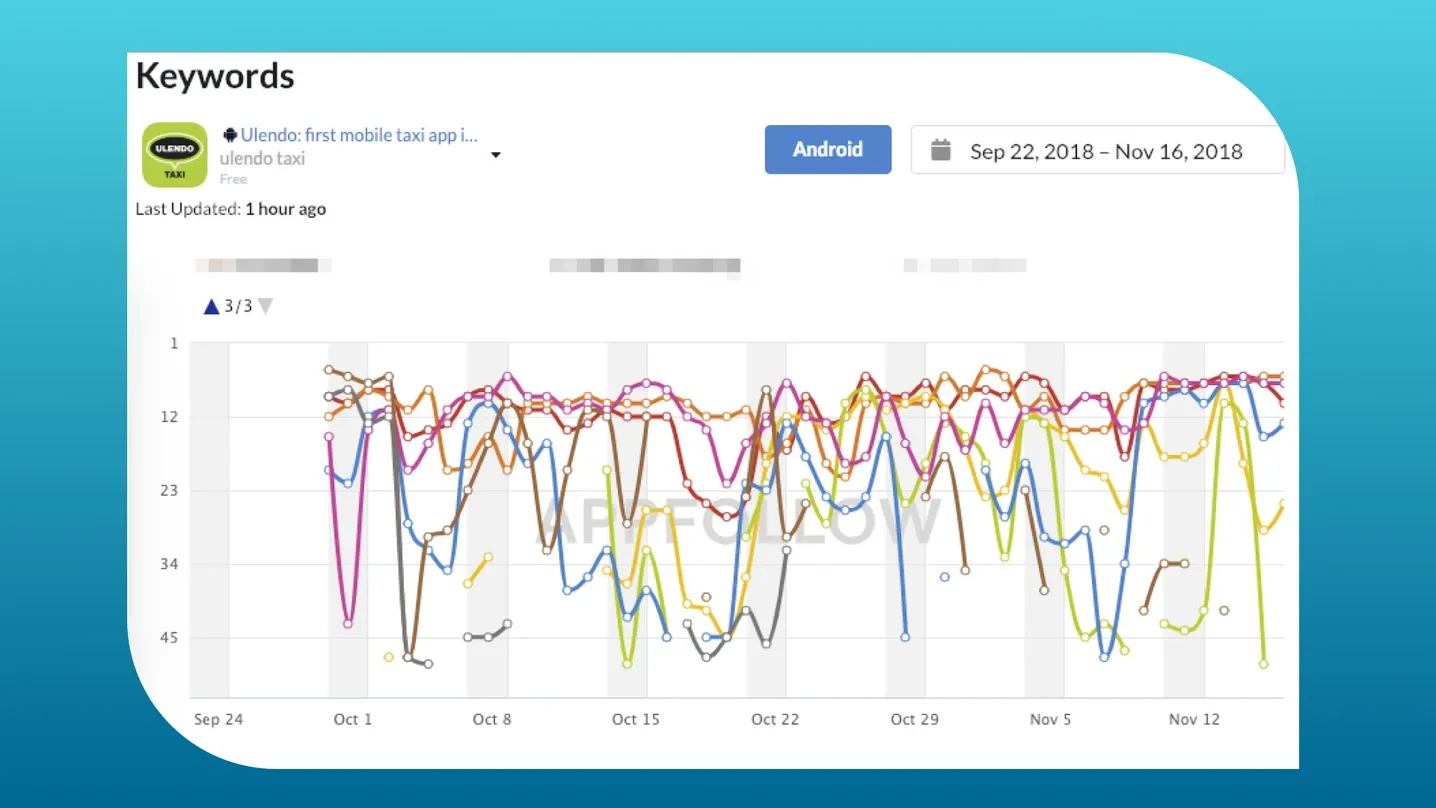
The main idea of this chart is that Google Play ranking is not stable and can change in just one day. Today you’re the third player on the market, the next day you might be somewhere between 20 and 40 positions.
A wide-spread assumption that it takes longer to see the results of Google Play optimization turns out to be right. Look at the chart below.
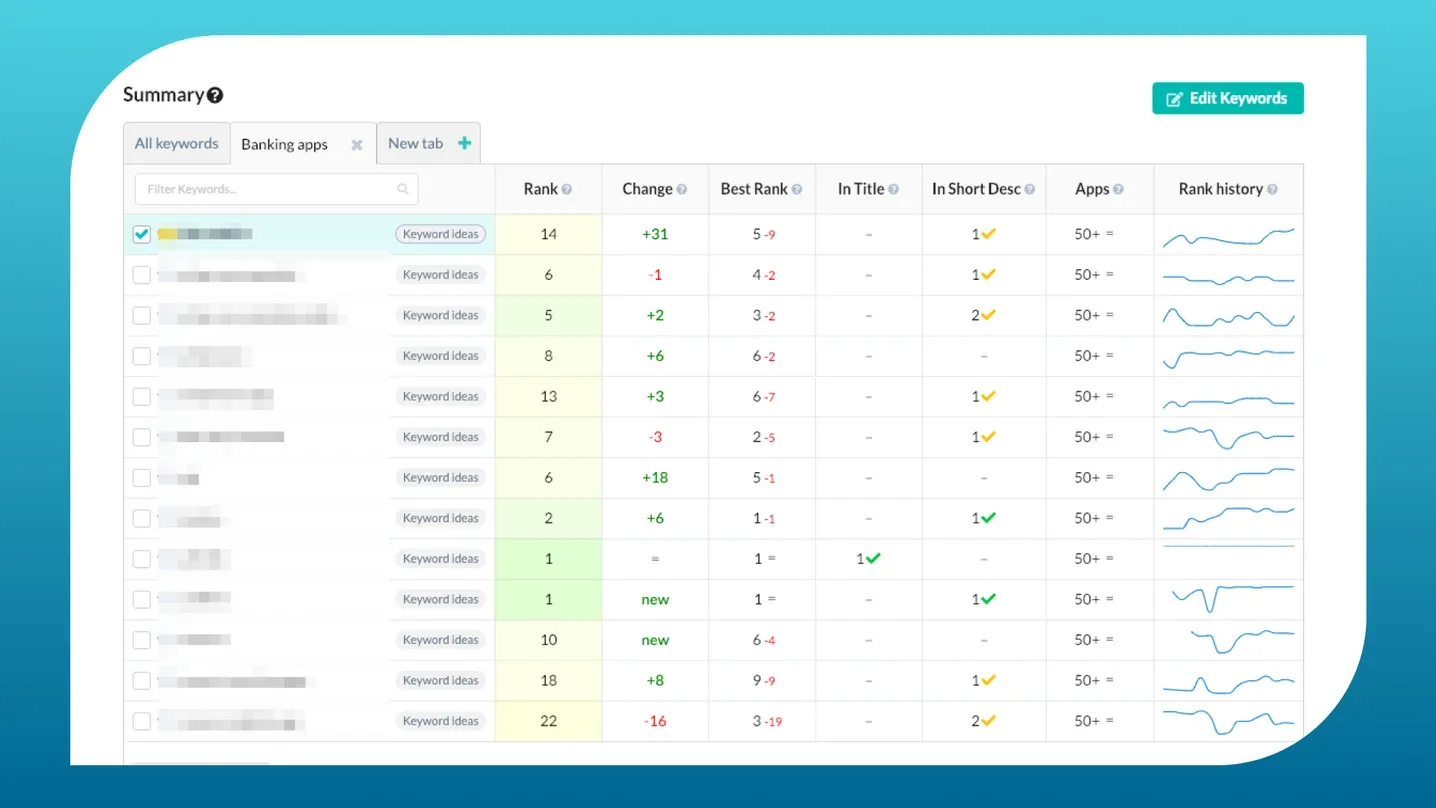
The chart shows our rank history by different keywords. Each line corresponds to a different banking keyword. It’s clearly seen that one month after release we are totally dropped out by some keywords but solidly hold in top 10 by other.
Final results
App Store
The number of installs remains at the same level comparing to the previous month. It might happen as the last month the app got 70% more downloads than usual this year.
But wait, impressions and app views show up to 3 times better results. Wow, it’s impressive!
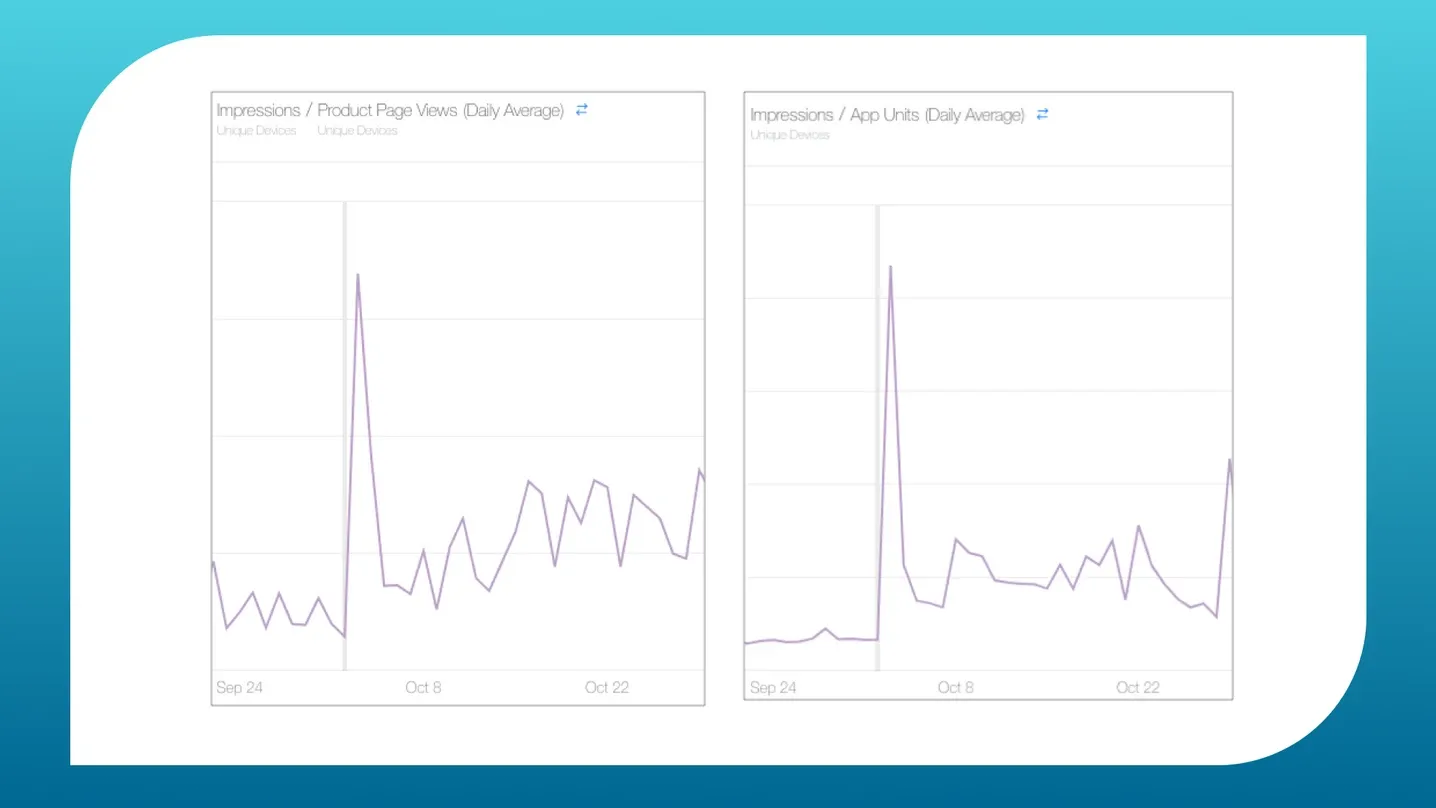
Conversion rates before and after the ASO update
Google Play
Android app store listing has grown by 10% in November and December. It correlates with a steady app downloads increase by 5% during that period. And guess what? Banking keywords helped to achieve it!.
However, Google Play acquisition report shows only brand name and “other” category searches. So, it’s impossible to know for sure which of the “other” keywords worked out the best. The results are kind of impressive: while Google Play listing visits by Ulendo name has increased by 10%, “other” search terms almost doubled. Most likely, these are the banking keywords that have influenced the “other” search growth so hard. Summary Excellent and effective ASO strategy is not only about the keywords – it’s a lot more about experimenting and creativity. Hypothesizing, actions, result measurement and again hypothesizing is a routine ASO production circle.
The essential point is to find your target audience and gain their attention. Our experiment in Zambia has definitely proved this theory – while searching for the needed banking app people accidentally run across a local taxi app among other searches. And, as a result, install it. The wise tenet of Keynesian economics “Supply creates its own demand” is still working here, quite successfully. 😎 Keep experimenting and you’ll rock!
Grow your revenue with Onde marketing team
Contact us
